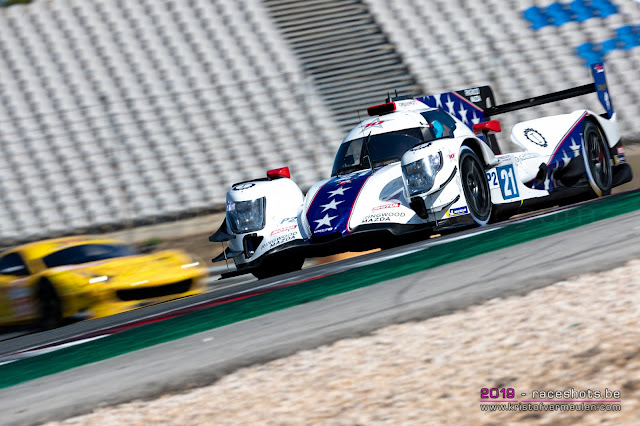The latest provisional entry list for the upcoming Lone Star Le Mans at COTA is down to 30 cars after the withdrawal of Ginetta in LMP1 and the addition of Dragonspeed in LMP2.
Ginetta pulled out both of their G60-LT-P1 cars, which are back on their wa the factory after the Bahrain round in December. The team released a short statement on their website this morning.
The WEC calendar is challenging, especially for any team with a new car in it’s first season and we have not had the chassis' back at the factory since before Silverstone in August.
The cancellation of the earlier WEC race in Brazil and the new race at COTA made it impossible to do the planned work at our facility in Virginia, so the cars were shipped post race back to Ginetta UK, the cars hopefully arrive at the factory today.
This puts the LMP1 class down to just 3 cars for the Lone Star Le Mans race with both Toyota's and a single Rebellion. Although still on the provisional entry list for Sebring, it's not clear whether the Ginetta's will make the trip across the pond for the 1000 mile race in March.
Dragonspeed is a new addition to the LMP2 class. The American team which has raced in LMP1 in the past Super season has shifted its focus back to the LMP2 class this year, winning the Daytona 24 hours last month in IMSA and planning an assault for the title in the European Le Mans Series. Ben Hanley (who initially would race with Ginetta in LMP1) will share the car with Henrik Hedman and Colin Braun.
It's unclear yet if this is a one-off appearance in the WEC, or Dragonspeed will run a double program in Sebring; combining IMSA and WEC.
In GTE, the brand new Corvette C8.R will make its debut in the World Endurance Championship, facing the competition of Porsche, Ferrari and Aston Martin. Jan Magnussen and Mike Rockenfeller make an unexpected return to Corvette racing after their contracts with the manufacturer ended at the end of last year.
Magnussen raced with Corvette for 16 years, and has 4 Le Mans wins under his belt. Rockenfeller was part of the endurance squad but would have been unable to race at Le Mans this year due to a date clash with DTM. Jan Magnussen should be at the start of the French endurance race this season with Danish team High Class Racing in the LMP2 category.
In GTE Am, so far Thomas Preining is the only confirmed driver so far on the #88 Dempsey-Proton Racing Porsche 911 RSR.
The updated entry list can be found HERE.
Kristof Vermeulen.
Magnussen raced with Corvette for 16 years, and has 4 Le Mans wins under his belt. Rockenfeller was part of the endurance squad but would have been unable to race at Le Mans this year due to a date clash with DTM. Jan Magnussen should be at the start of the French endurance race this season with Danish team High Class Racing in the LMP2 category.
In GTE Am, so far Thomas Preining is the only confirmed driver so far on the #88 Dempsey-Proton Racing Porsche 911 RSR.
The updated entry list can be found HERE.
Kristof Vermeulen.









